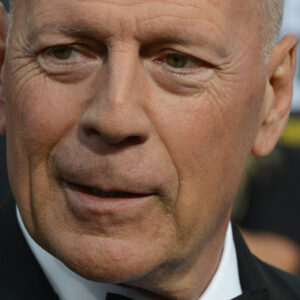Mary J. Blige stands as a towering figure in the world of R&B, a woman whose voice transcended genres and who brought an unfiltered, raw authenticity to her music that resonated deeply with fans. Yet, her public image—how she’s been perceived and embraced by the world—has evolved just as dramatically as her sound over the course of her storied career. From the early days of gritty, heart-on-her-sleeve performances, to a transformation into a symbol of empowerment and self-love, Blige’s image mirrors not just her own personal journey but also the shifting cultural landscape around her.
Early Career: Raw Emotion and Vulnerability
In the early 1990s, when Mary J. Blige burst onto the scene with What’s the 411?, she was unlike anything the world of R&B had seen. While other artists polished their voices and projected an aura of smooth sophistication, Blige was raw—unapologetically so. She sang about pain, betrayal, and hardship with a gritty realism that felt visceral. Her music, a fusion of R&B melodies and hip-hop beats, didn’t just hit the notes—it hit the gut.
The world saw Mary J. Blige as a wounded, struggling artist, who wore her vulnerability as both a badge of honor and a burden. Songs like “Real Love” and “You Remind Me” didn’t just speak about romantic longing—they carried with them the weight of personal strife. Her public image, at this point, was inseparable from her personal demons. She was the woman who sang her heart out, and you could hear in every note that she wasn’t just singing—she was surviving.
This raw authenticity endeared her to millions, particularly Black women who saw in Blige a reflection of their own struggles. She was relatable in a way that few artists at the time could match. But that relatability came with a price: the public, and the press, often fixated on her troubled personal life. Reports of Blige’s battles with addiction, depression, and tumultuous relationships created a narrative that the “Queen of Hip-Hop Soul” was constantly fighting her own inner demons. It was a perception she would spend years shedding.
The ‘Queen of Hip-Hop Soul’ Era: Toughness Meets Vulnerability
As the 1990s progressed, Mary J. Blige’s public image solidified around her unique blend of hip-hop swagger and soulful depth. She was crowned the “Queen of Hip-Hop Soul,” a title she earned with albums like My Life and Share My World, where her music didn’t just reflect her pain, but also her survival. During this era, her image projected both toughness and fragility—a woman who could rock combat boots and a baseball cap, yet still sing about heartbreak with tears in her voice.
What set Blige apart from other artists was her ability to be both the warrior and the wounded. Her fans admired her for her ability to be strong yet vulnerable, a walking paradox that felt deeply human. And for many, she wasn’t just a singer—she was a mirror, reflecting their own emotional struggles. Publicly, however, Blige was still often framed by her past. The media latched onto stories of her difficult upbringing in the Bronx, her troubled relationships, and her struggles with substance abuse. For years, it seemed like her personal hardships would define her public image as much as her music.
Yet, even within this narrative of struggle, there was a subtle shift. Mary J. Blige wasn’t just a survivor; she was a fighter. Her public image began to embody resilience. While her early work was steeped in the pain of experience, albums like Mary and No More Drama suggested that she was beginning to find her way out of the storm.
Personal Growth: Redefining Strength and Self-Love
The early 2000s marked a major turning point in Blige’s public image. By this time, she had matured—not just as an artist, but as a woman. The release of The Breakthrough in 2005 wasn’t just a critical and commercial success; it was a statement. Blige had finally broken through the chaos of her past, and the public took notice.
This era of Blige’s career reflected a transformation. While her earlier work was defined by the struggles of love, addiction, and self-worth, The Breakthrough was about empowerment. Tracks like “Be Without You” and “Take Me As I Am” presented a new Mary J. Blige—one who was no longer defined by her pain, but by her triumph over it.
Blige’s public image evolved alongside her music. She was no longer the brokenhearted woman barely holding it together; she was a woman who had fought her way out of the darkness and was now thriving. Her image shifted from being the “Queen of Hip-Hop Soul” to being a beacon of self-love, a symbol for women—especially Black women—of strength and resilience. The media narrative changed as well. Now, interviews and profiles focused less on her past struggles and more on her journey of self-empowerment and spiritual growth.
By this time, Blige had become an icon not just for her music but for her strength. In an industry that often feeds on tragedy, Blige had rewritten her story as one of empowerment. The public’s perception of her as a troubled artist had shifted—she was now a powerful, triumphant figure who had mastered her destiny.
Mainstream Appeal and Hollywood Success
While Mary J. Blige had long been a superstar in the music world, her public image began to transcend the confines of the R&B and hip-hop genres in the late 2000s. She started taking on acting roles that showcased a different side of her talent. Her critically acclaimed performance in Mudbound in 2017 was a game-changer, earning her nominations for both the Academy Awards and the Golden Globes.
Suddenly, Blige wasn’t just a music icon; she was a serious actress. Her image expanded beyond the music industry, and she gained a broader mainstream appeal. She graced red carpets with an elegance and poise that reflected the deep transformation she had undergone, both personally and professionally. In the public eye, she was no longer just a voice of resilience but a multifaceted artist who had conquered every medium she touched.
Her acting roles added new layers to her public image, showcasing her range not just as a performer but as a woman who could adapt, grow, and excel in new arenas. With each new venture, whether it was music, film, or fashion, Blige demonstrated that she was a woman in control of her own narrative.
A Legacy of Strength and Empowerment
Today, Mary J. Blige’s public image is one of strength, empowerment, and resilience. She is no longer viewed solely through the lens of her struggles, but rather through her triumphs. She has become a cultural icon whose influence extends far beyond her music.
Blige’s journey from the raw vulnerability of What’s the 411? to the triumphant, empowering figure of The Breakthrough and beyond has mirrored the journey of countless women. Her public image has evolved from one defined by hardship and survival to one of power, resilience, and self-love. Through her music, her acting, and her public persona, Blige has become a symbol for overcoming adversity and finding inner strength.
Her story, like her music, resonates deeply because it is rooted in truth. Blige has always been open about her struggles, but she has also been equally vocal about her journey toward healing. This duality—pain and healing, struggle and triumph—has defined her public image for over three decades.
As Blige continues to evolve as an artist, her public image will no doubt continue to transform as well. But one thing is certain: she will always be a symbol of strength, resilience, and empowerment for generations to come. She has moved beyond the title of the “Queen of Hip-Hop Soul” to something even greater—a living testament to the power of perseverance and self-love.
In the ever-changing world of celebrity, where public personas are often as fleeting as the trends they follow, Mary J. Blige stands as a rare figure whose image has only grown stronger with time. From the raw, vulnerable artist of the early ’90s to the triumphant cultural icon she is today, Blige’s journey is one of evolution, survival, and ultimately, empowerment. And that, perhaps, is her greatest legacy of all.





